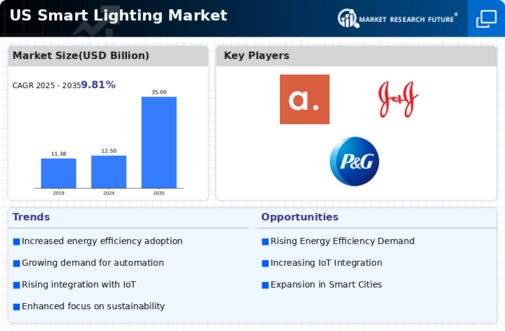US Smart Lighting Market Summary
The US Smart Lighting market is projected to grow from 12.5 billion USD in 2024 to 35 billion USD by 2035, indicating a robust expansion.
Key Market Trends & Highlights
US Smart Lighting Key Trends and Highlights
- The market is expected to experience a compound annual growth rate (CAGR) of 9.81 percent from 2025 to 2035.
- By 2035, the market valuation is anticipated to reach 35 billion USD, reflecting a substantial increase from 12.5 billion USD in 2024.
- The growth trajectory suggests a strong demand for smart lighting solutions in residential and commercial sectors.
- Growing adoption of smart lighting technology due to energy efficiency concerns is a major market driver.
Market Size & Forecast
| 2024 Market Size | 12.5 (USD Billion) |
| 2035 Market Size | 35 (USD Billion) |
| CAGR (2025 - 2035) | 9.81% |
Major Players
Apple Inc (US), Microsoft Corp (US), Amazon.com Inc (US), Alphabet Inc (US), Berkshire Hathaway Inc (US), Meta Platforms Inc (US), Tesla Inc (US), Johnson & Johnson (US), Visa Inc (US), Procter & Gamble Co (US)












